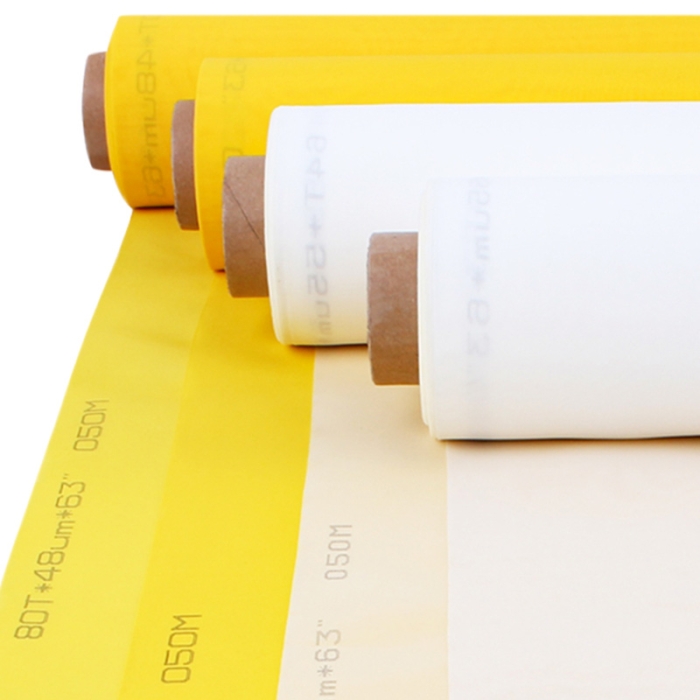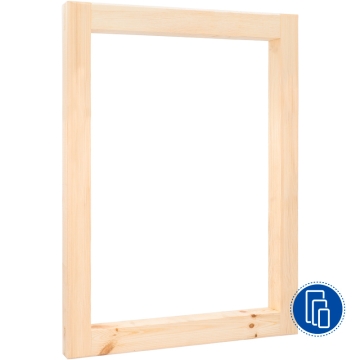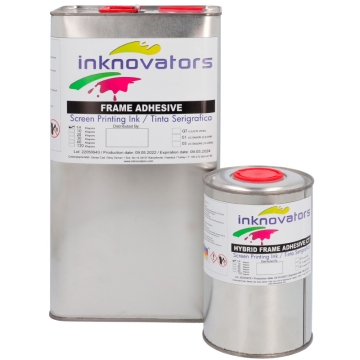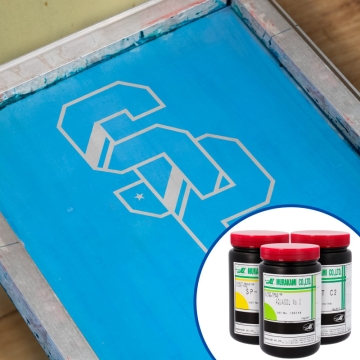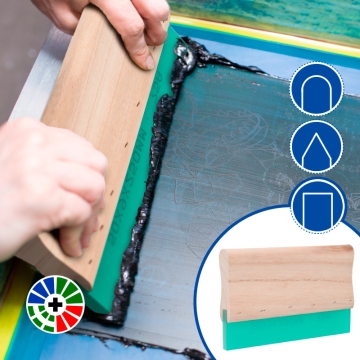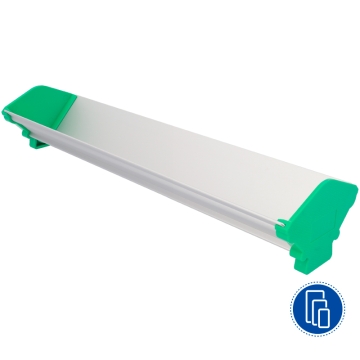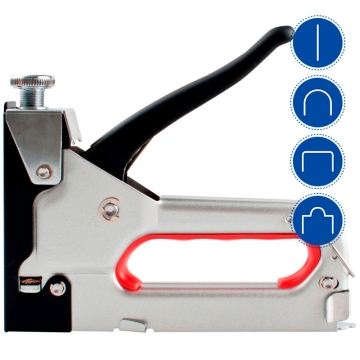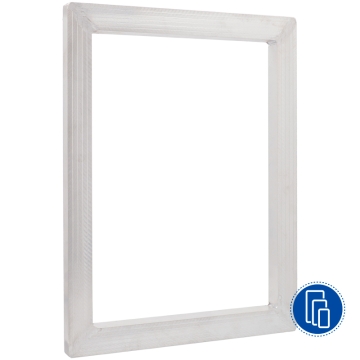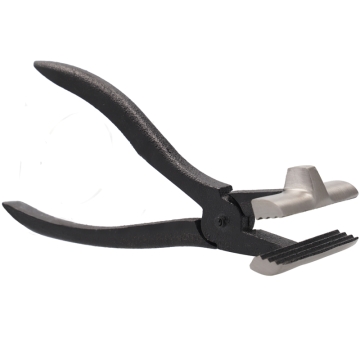Monofilament polyester mesh for screen printing screens.
- Fabric weaves ranging from 34 to 140 threads per linear centimetre
- Thread thickness: normal (T)
More information
https://www.brildor.com/en/screen-printing-mesh
44521
Screen Printing Meshes
<p><a name="know-more1"></a></p>
<h2>More information about Screen Printing Meshes</h2>
<p> </p>
<p><strong>INDEX</strong></p>
<p>> <a href="#know-more1">Description</a></p>
<p>> <a href="#know-more4">Technical specifications</a></p>
<p>> <a href="#know-more2">How to choose meshes for screen printing screens?</a></p>
<p> </p>
<p><a name="know-more1"></a></p>
<p><strong>DESCRIPTION</strong></p>
<ul>
<li>Monofilament polyester fabric. Each strand is made of a single thread, resulting in a very smooth surface. This facilitates ink passage much more than multifilament types, which are characterised by irregular surfaces</li>
<li>High resistance to tension, mechanical and chemical abrasion</li>
<li>Durable and easy to clean</li>
<li>Excellent dimensional stability</li>
<li>Normal thickness threads for general use</li>
<li>Available in white and yellow. Yellow meshes do not refract light, allowing for higher definition in very complex designs</li>
<li>Delivered in roll format</li>
<li>In <strong>Related Products</strong>, you will find adhesive for fixing the mesh to the frame</li>
</ul>
<p> </p>
<p><a name="know-more4"></a></p>
<p><strong>TECHNICAL SPECIFICATIONS <span class="naranja-brildor"><sup>(*)</sup></span> </strong></p>
<table>
<tbody>
<tr>
<td style="text-align: center;">
<p><strong>Mesh</strong></p>
</td>
<td style="text-align: center;">
<p><strong>Thread Count</strong></p>
</td>
<td style="text-align: center;">
<p><strong>Thread Diameter</strong></p>
</td>
<td style="text-align: center;">
<p><strong>Mesh Opening</strong></p>
</td>
<td style="text-align: center;">
<p><strong>Open Area</strong></p>
</td>
<td style="text-align: center;">
<p><strong>Fabric Thickness</strong></p>
</td>
<td style="text-align: center;">
<p><strong>Ink Volume<sup><span class="naranja-brildor">(**)</span></sup><br></strong></p>
</td>
</tr>
<tr>
<td style="text-align: center;">
<p><strong>Colour</strong></p>
</td>
<td style="text-align: center;">
<p><strong>cm/inches</strong></p>
</td>
<td style="text-align: center;">
<p><strong>µ</strong></p>
</td>
<td style="text-align: center;">
<p><strong>µ</strong></p>
</td>
<td style="text-align: center;">
<p><strong>%</strong></p>
</td>
<td style="text-align: center;">
<p><strong>µ</strong></p>
</td>
<td style="text-align: center;">
<p><strong>cm<sup>3</sup>/cm<sup>2</sup></strong></p>
</td>
</tr>
<tr>
<td style="text-align: center;">White</td>
<td style="text-align: center;"><span class="azul-negrita">34 / 90</span></td>
<td style="text-align: center;"><span class="azul-negrita">100</span></td>
<td style="text-align: center;"><span class="azul-negrita">189</span></td>
<td style="text-align: center;"><span class="azul-negrita">46</span></td>
<td style="text-align: center;"><span class="azul-negrita">180</span></td>
<td style="text-align: center;"><span class="azul-negrita">83</span></td>
</tr>
<tr>
<td style="text-align: center;">White</td>
<td class="azul-negrita" style="text-align: center;">43 / 110</td>
<td class="azul-negrita" style="text-align: center;">80</td>
<td class="azul-negrita" style="text-align: center;">150</td>
<td class="azul-negrita" style="text-align: center;">42</td>
<td class="azul-negrita" style="text-align: center;">140</td>
<td class="azul-negrita" style="text-align: center;">59</td>
</tr>
<tr>
<td style="text-align: center;">White</td>
<td class="azul-negrita" style="text-align: center;">55 / 130</td>
<td class="azul-negrita" style="text-align: center;">71</td>
<td class="azul-negrita" style="text-align: center;">124</td>
<td class="azul-negrita" style="text-align: center;">40</td>
<td class="azul-negrita" style="text-align: center;">94</td>
<td class="azul-negrita" style="text-align: center;">45</td>
</tr>
<tr>
<td style="text-align: center;">White</td>
<td class="azul-negrita" style="text-align: center;">77 / 180</td>
<td class="azul-negrita" style="text-align: center;">55</td>
<td class="azul-negrita" style="text-align: center;">86</td>
<td class="azul-negrita" style="text-align: center;">37</td>
<td class="azul-negrita" style="text-align: center;">105</td>
<td class="azul-negrita" style="text-align: center;">34</td>
</tr>
<tr>
<td style="text-align: center;">White</td>
<td class="azul-negrita" style="text-align: center;">90 / 200</td>
<td class="azul-negrita" style="text-align: center;">48</td>
<td class="azul-negrita" style="text-align: center;">79</td>
<td class="azul-negrita" style="text-align: center;">38</td>
<td class="azul-negrita" style="text-align: center;">105</td>
<td class="azul-negrita" style="text-align: center;">32</td>
</tr>
<tr>
<td style="text-align: center;">Yellow</td>
<td style="text-align: center;"><span class="azul-negrita">90 / 230</span></td>
<td style="text-align: center;"><span class="azul-negrita">48</span></td>
<td style="text-align: center;"><span class="azul-negrita">62</span></td>
<td style="text-align: center;"><span class="azul-negrita">32</span></td>
<td style="text-align: center;"><span class="azul-negrita">92</span></td>
<td style="text-align: center;"><span class="azul-negrita">29.4</span></td>
</tr>
<tr>
<td style="text-align: center;">Yellow</td>
<td class="azul-negrita" style="text-align: center;">100 / 255</td>
<td class="azul-negrita" style="text-align: center;">40</td>
<td class="azul-negrita" style="text-align: center;">60</td>
<td class="azul-negrita" style="text-align: center;">36</td>
<td class="azul-negrita" style="text-align: center;">60</td>
<td class="azul-negrita" style="text-align: center;">21</td>
</tr>
<tr>
<td style="text-align: center;">Yellow</td>
<td class="azul-negrita" style="text-align: center;">120 / 305</td>
<td class="azul-negrita" style="text-align: center;">34</td>
<td class="azul-negrita" style="text-align: center;">49</td>
<td class="azul-negrita" style="text-align: center;">35</td>
<td class="azul-negrita" style="text-align: center;">71</td>
<td class="azul-negrita" style="text-align: center;">24.9</td>
</tr>
<tr>
<td style="text-align: center;">Yellow</td>
<td style="text-align: center;"><span class="azul-negrita">140 / 355</span></td>
<td style="text-align: center;"><span class="azul-negrita">34</span></td>
<td style="text-align: center;"><span class="azul-negrita">37</span></td>
<td style="text-align: center;"><span class="azul-negrita">27</span></td>
<td style="text-align: center;"><span class="azul-negrita">61</span></td>
<td style="text-align: center;"><span class="azul-negrita">16</span></td>
</tr>
</tbody>
</table>
<p><sup><span class="naranja-brildor">(*)</span></sup><span style="font-size: 10pt;"> Information provided by the manufacturer.</span> <span class="naranja-brildor"><sup>(**)</sup></span><span style="font-size: 10pt;"> Theoretical values.</span></p>
<p> </p>
<p><a name="know-more2"></a></p>
<p><strong>HOW TO CHOOSE MESHES FOR SCREEN PRINTING SCREENS?</strong></p>
<ul>
<li>The choice of a mesh depends on: the <strong>number of threads per centimetre or linear inch</strong> and its <strong>thickness</strong></li>
<li>Meshes are made up of interwoven threads with small empty spaces between them. Ink passes through these openings during printing</li>
<li>The more threads the mesh has, the smaller the openings, leaving less space for the ink to pass through. Conversely, fewer threads imply larger openings</li>
<li>The thread thickness can be: extra strong (HD), normal (T), medium (M) and thin (S). It determines the mesh opening size: the thicker the thread, the smaller the opening</li>
<li>Thin threads allow for the reproduction of very complex details, while extra strong threads are useful when using abrasive inks or substrates with rough surfaces</li>
<li>For designs with a lot of detail, it is recommended to use a mesh with more threads, which is tighter. More threads provide higher definition in the print</li>
<li>Meshes with fewer threads, which are more open, are more suitable for printing less elaborate images. More ink can pass through the openings, which could obscure the details. This type of mesh is recommended for printing, for example, letters, texts or geometric figures</li>
<li>Printing with meshes that have more threads requires the use of more liquid inks to pass through the small openings. For example, paper and PVC inks as well as plastisol inks. For meshes with fewer threads, it is advisable to use denser inks such as water-based acramine and lacquer inks</li>
</ul>
https://www.brildor.com/media/catalog/product/m/a/mallas-serigrafia.jpg
44.9
instock
0
44.9
0
0
0
https://www.brildor.com/media/catalog/product/m/a/mallas-serigrafia.jpg
4694
16775
16776
26028
26041
43128
44117
44876
48499
/Screen Printing
/Screen Printing/Screen Preparation
2022-04-21T07:23:37+0000
